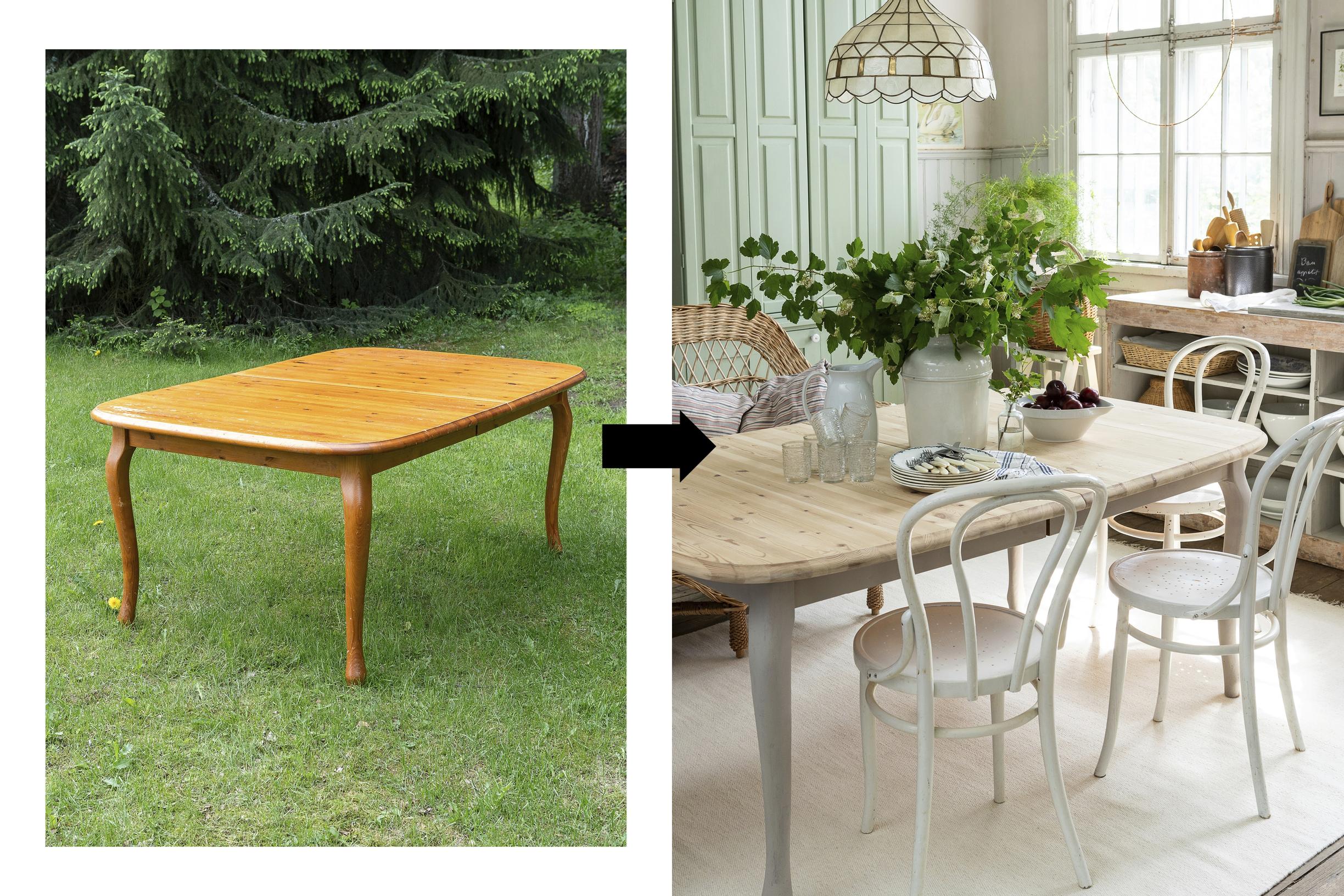
Bright and glowing
Katja Rinkinen’s method: refresh a pine table with milk and soap for a velvety finish
A stained pine table from the 1990s was refreshed with sanding, milk, and a soap treatment. Check out instructions and a video from blogger Katja Rinkinen that explains the process!
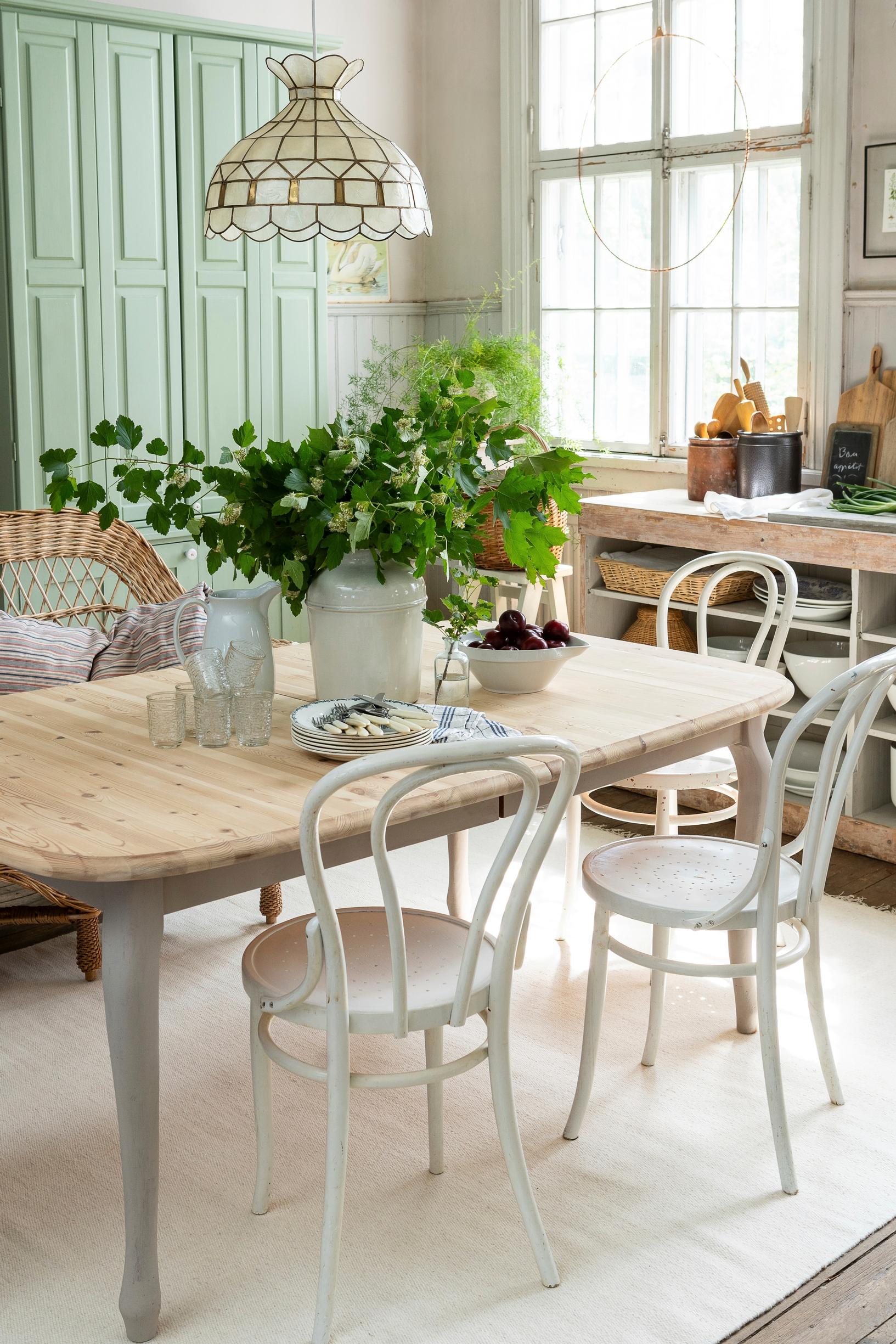
Soap-washed pine table—supplies:
- a pine table
- a sander, such as a detail sander
- sandpaper, grits 60 or 80 and 180
- a respirator
- fat-free milk and a brush
- white linseed oil soap
- a sturdy brush for scrubbing
- two buckets and a cloth
- furniture paint that provides a chalky finish (e.g. Rust-Oleum Chalky finish) and a brush
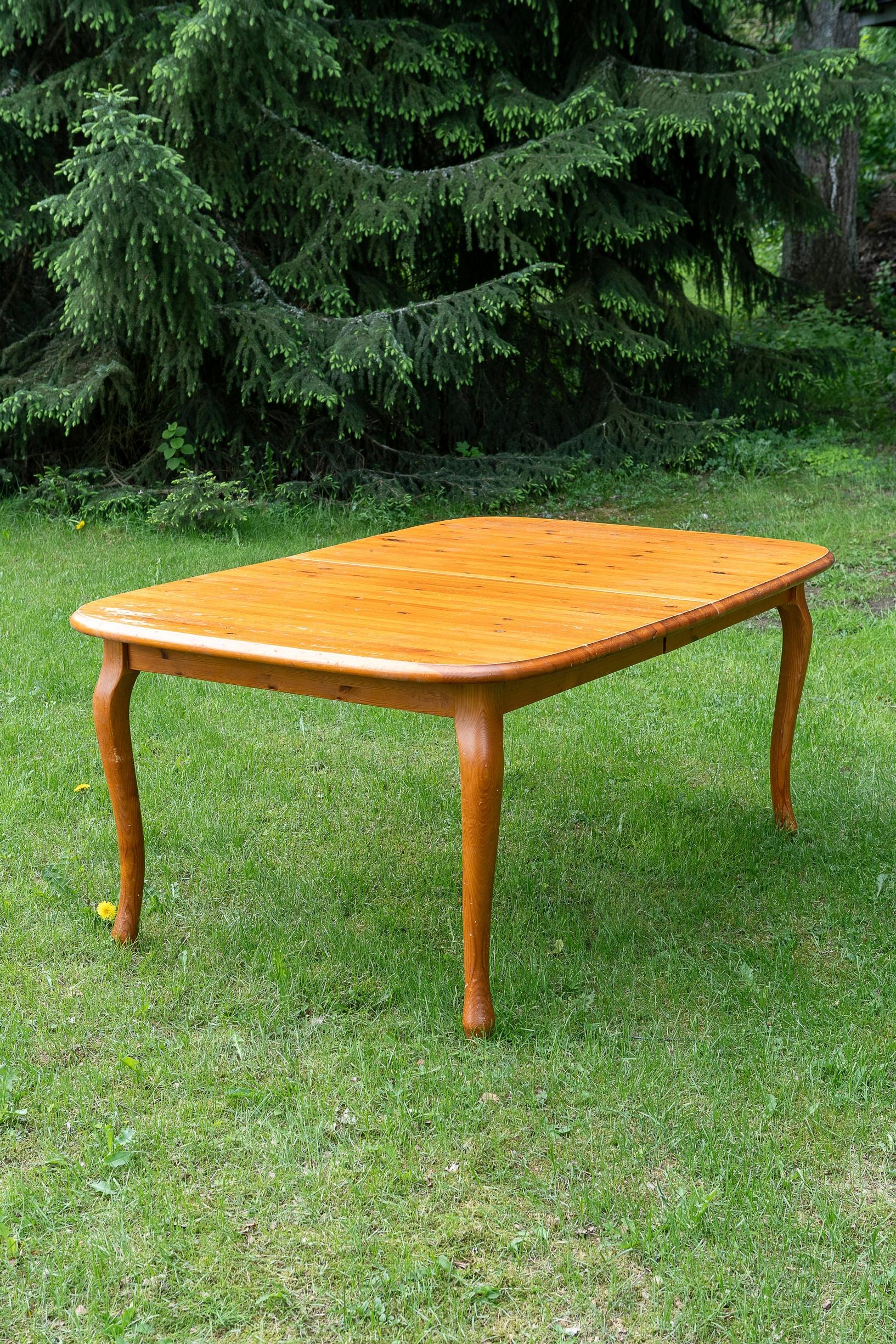
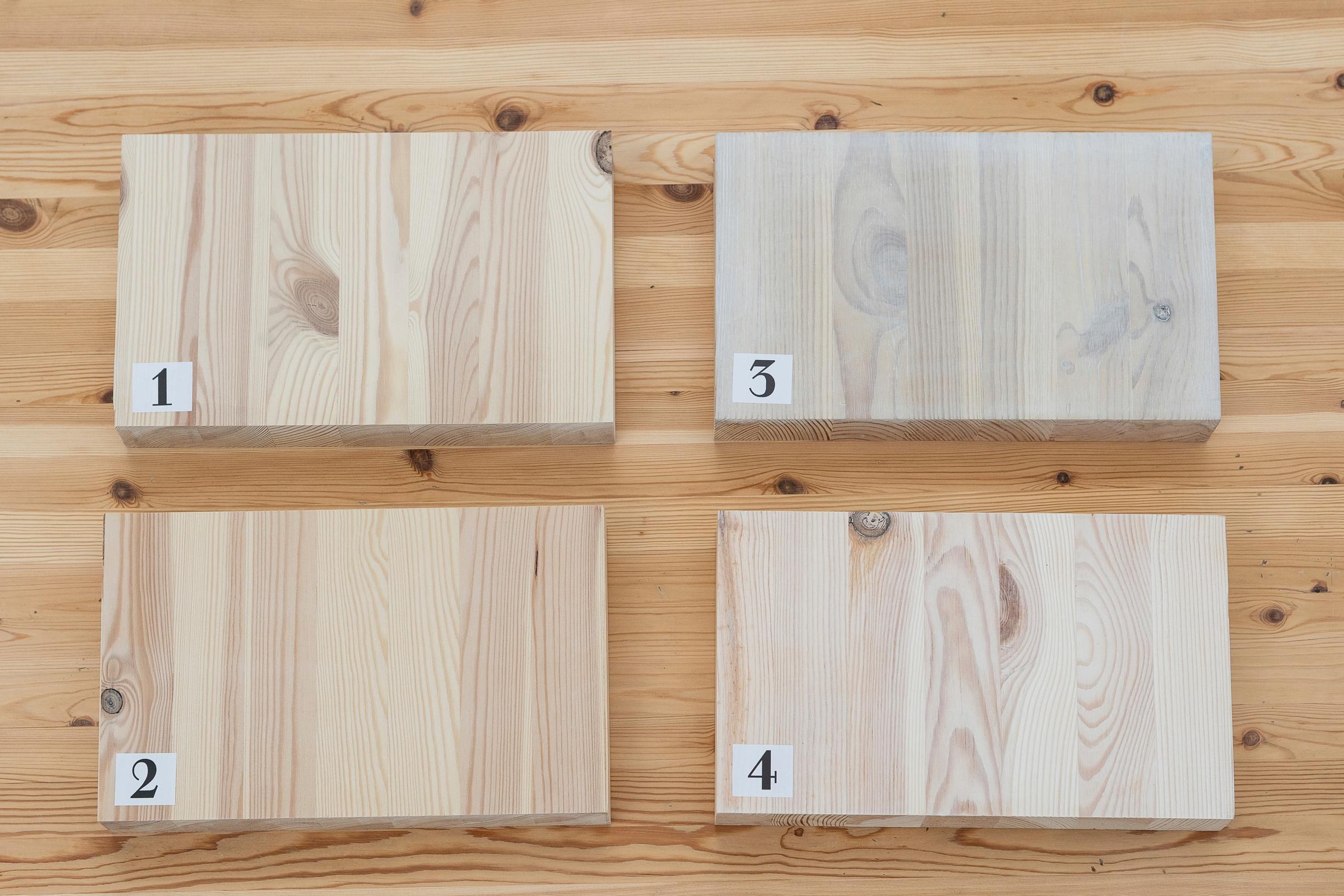
Soap-washed pine table—instructions:
- Sand the tabletop. First, remove old varnish or paint with coarse sandpaper. Continue with fine sandpaper, then wipe away the dust with a damp cloth. Sand outdoors and wear a respirator.
- Brush fat-free milk onto the sanded wood until the surface no longer absorbs liquid. Wipe off the excess with a cloth and let the wood dry overnight. The milk treatment creates a dirt-repellent surface but does not change the color of the wood.
- Mix a strong soap solution using 1 part soap and 5 parts cold water. Fill another bucket with cold water. Dampen the table’s surface with water and scrub in the soap solution with a brush, working in the direction of the grain. Treat the surface in a couple of sections. Occasionally wipe the surface with cold water and a cloth, changing the water frequently. Repeat the scrubbing the next day. The soap solution keeps well at room temperature. Do not use pine soap, as it dries out the wood and makes it splintery.
- Next, prepare a milder soap solution by doubling the amount of water. Repeat the scrubbing process twice.
- Paint the table legs and apron boards with furniture paint. On the sample table, Rust-Oleum furniture paint was used by mixing the Flint and Cocoa shades.
- Maintain the surface by washing it when needed with a solution of 1 part soap to 20 parts water.
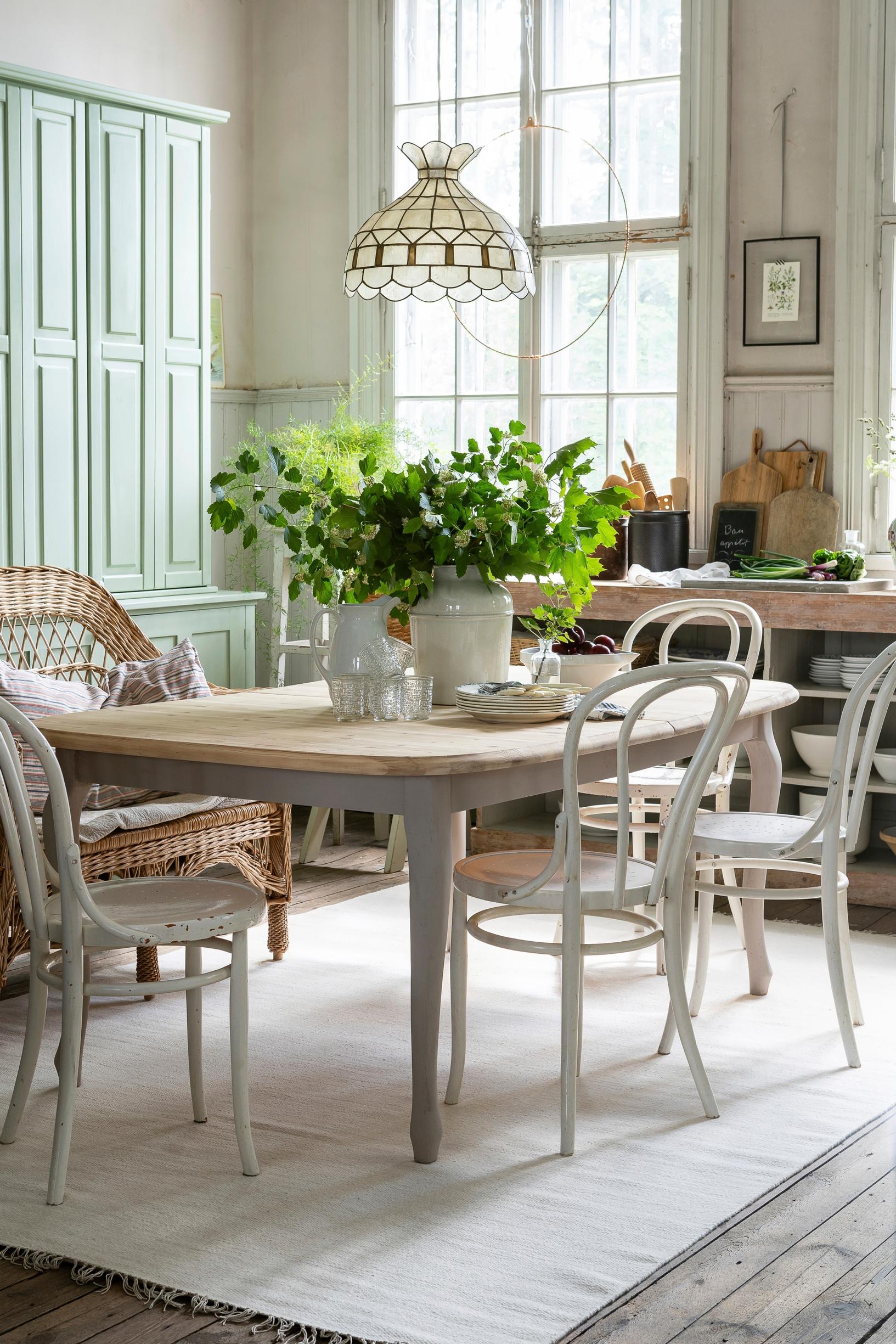
Most recent
Latest


